Abstract
The effects of helium pressure and hydrostatic pressure on Rana pipiens were compared. Both agents caused paralysis at pressures greater than 135 atmospheres (1 atm = 101.325 kPa), but the median pressure for hydrostatic-pressure-induced paralysis was 35 atm less than that for helium pressure. When the ability of both pressurizing agents to reverse urethane-induced anaesthesia was compared, it was found that hydrostatic pressure raised the median dose for anaesthesia 2.2-fold more per atmosphere than did helium pressure. Animals that were lightly anaesthetized by urethane at 110 atm hydrostatic pressure became more deeply anaesthetized when helium was admitted isobarically into the pressure chamber. This difference in depth of anaesthesia between hydrostatic pressure and helium pressure is consistent with helium possessing an inherent anaesthetic effect. The abilities of other gases to pressure-reverse urethane anaesthesia were also determined. The degree of attenuation of the full pressure reversal effect observed with hydrostatic pressure was proportional to the lipid solubility of the gases, increasing in the order helium, neon, hydrogen, nitrogen and argon. Our data on the difference between hydrostatic and helium pressure are consistent with the critical volume hypothesis.
Full text
PDF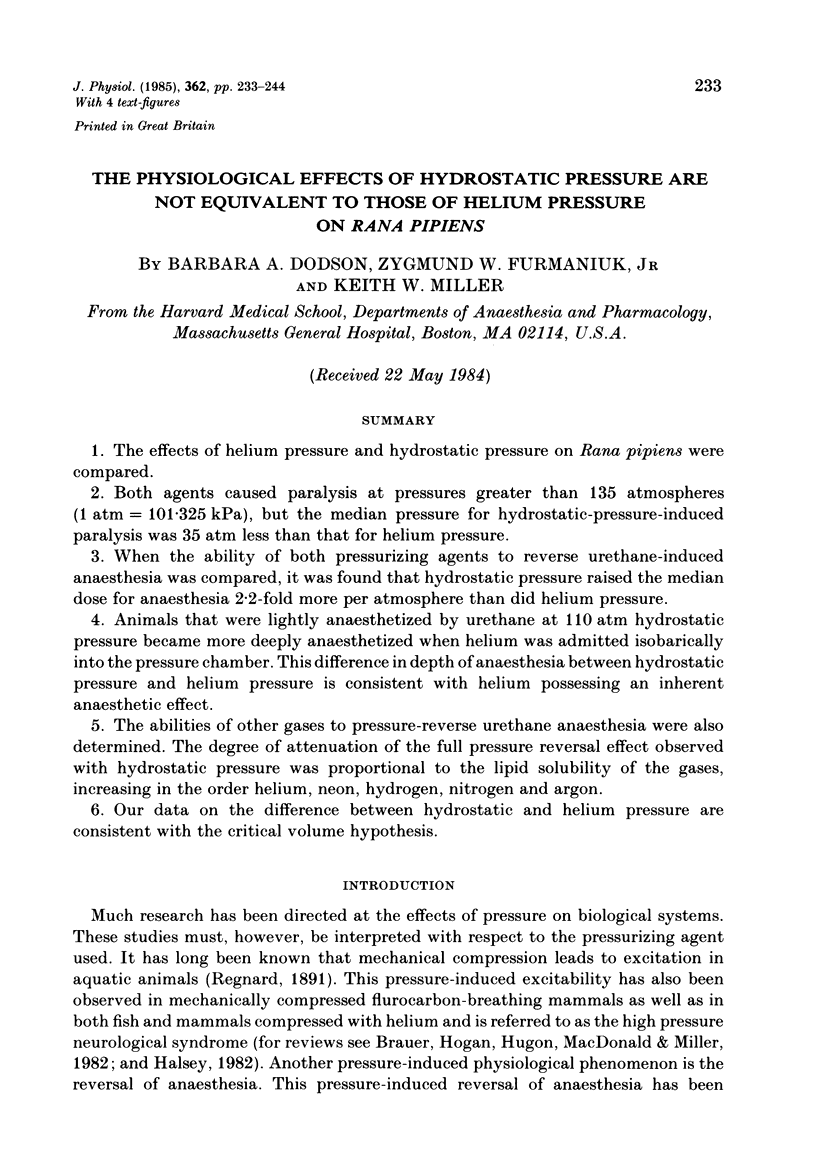
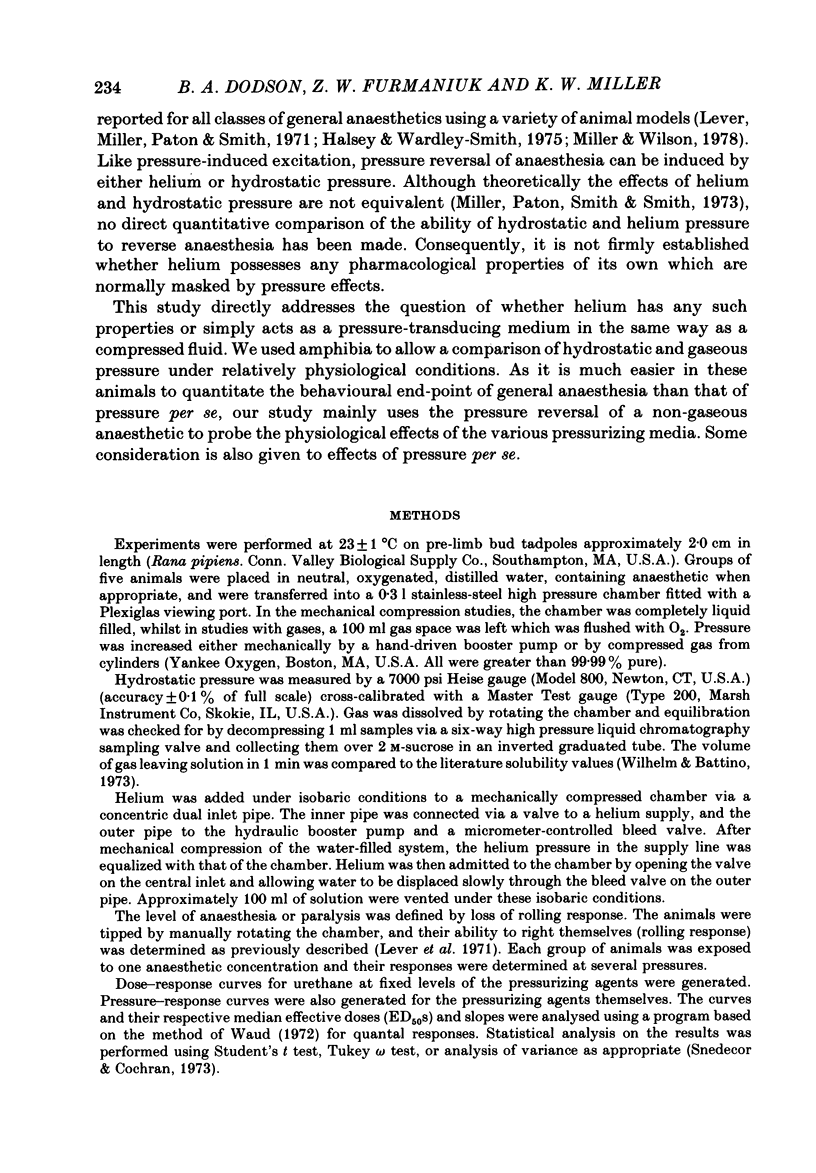
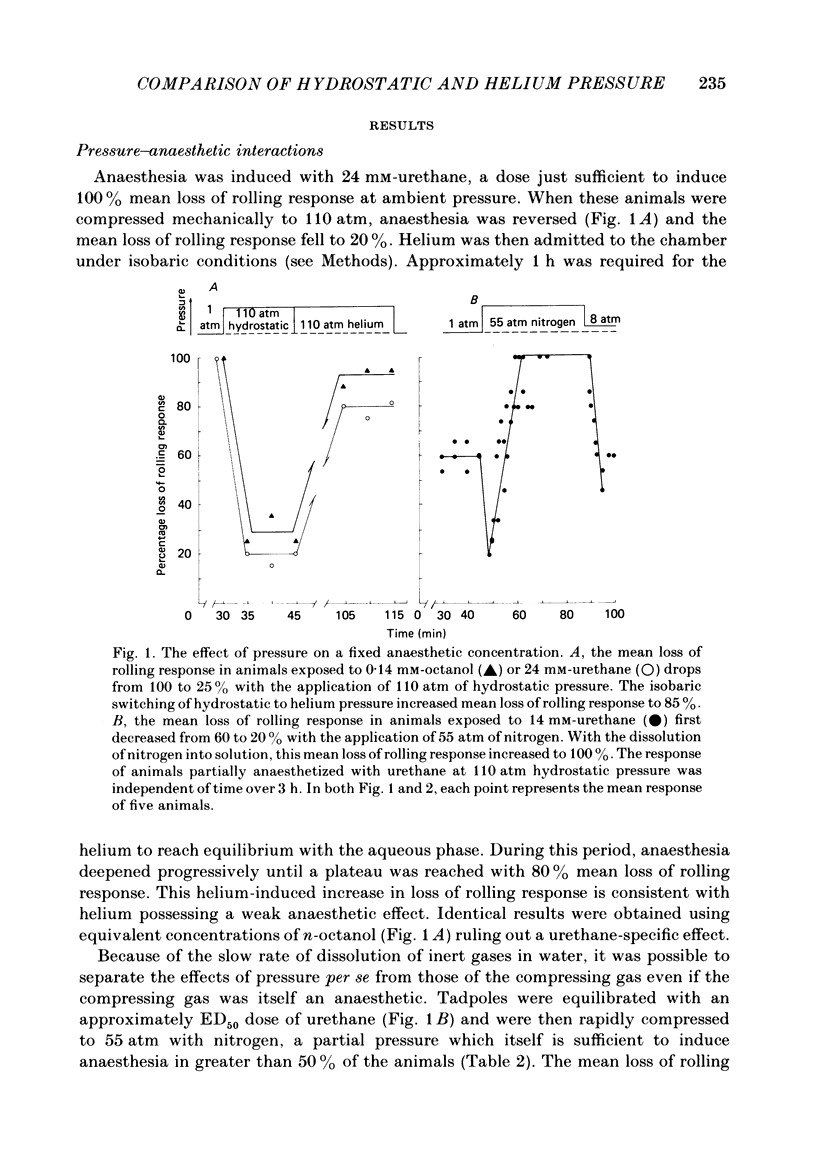
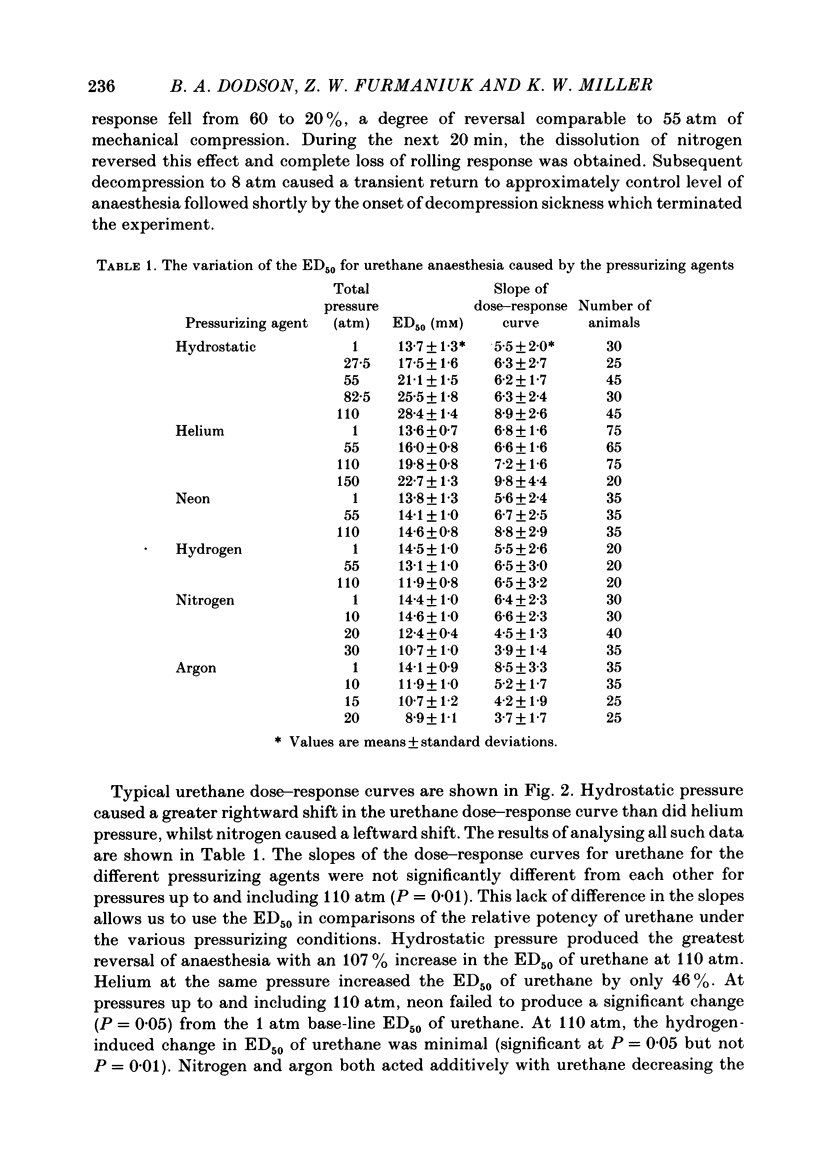
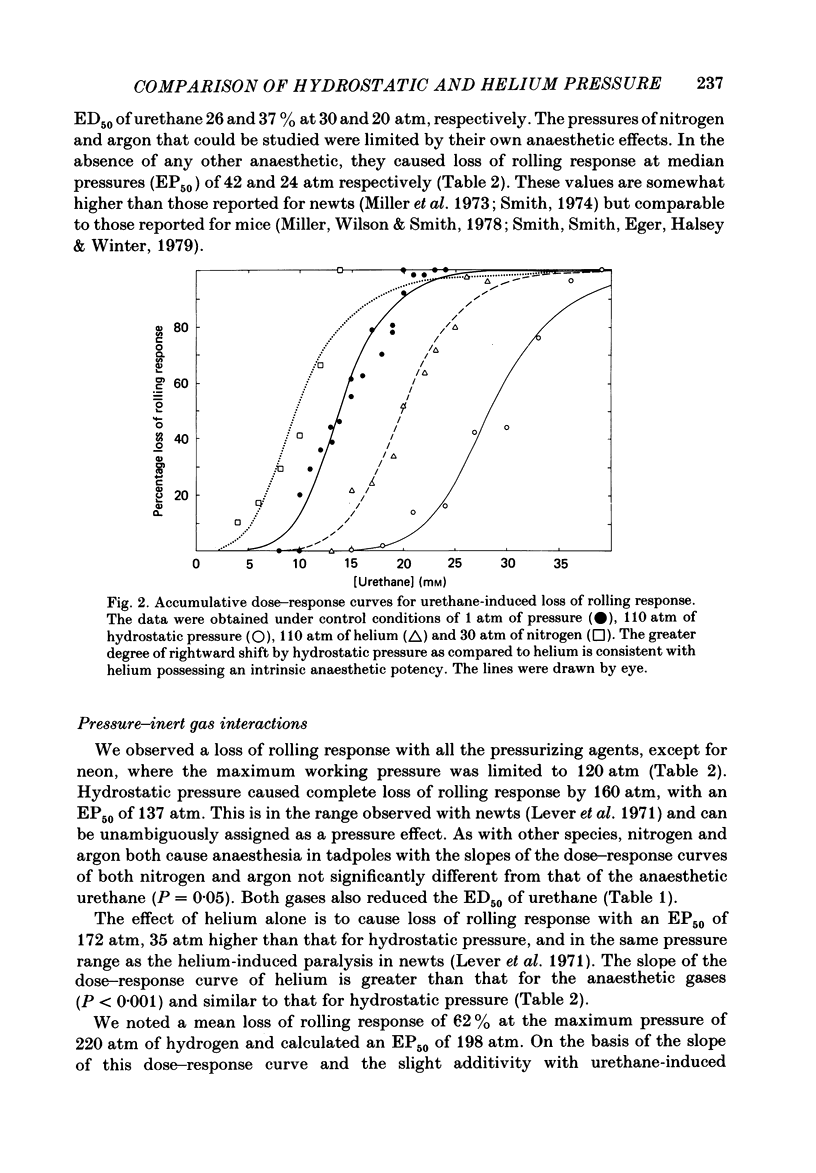
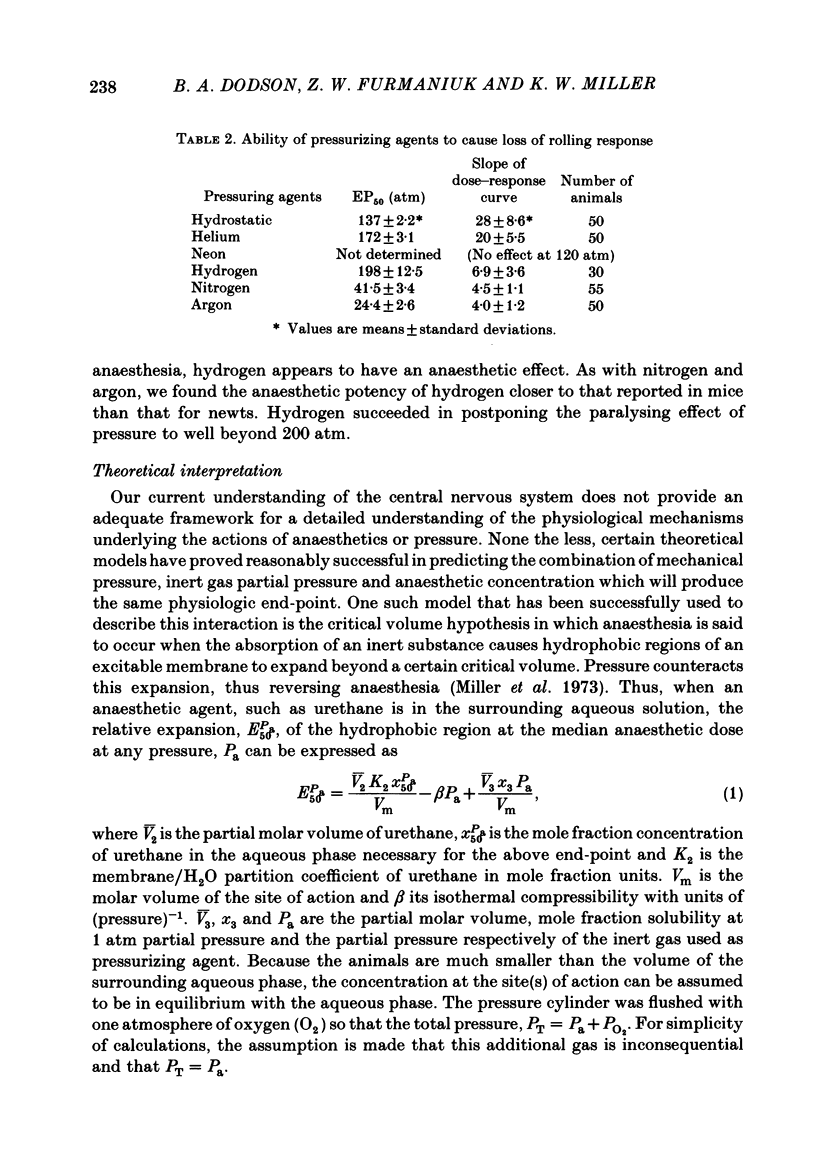
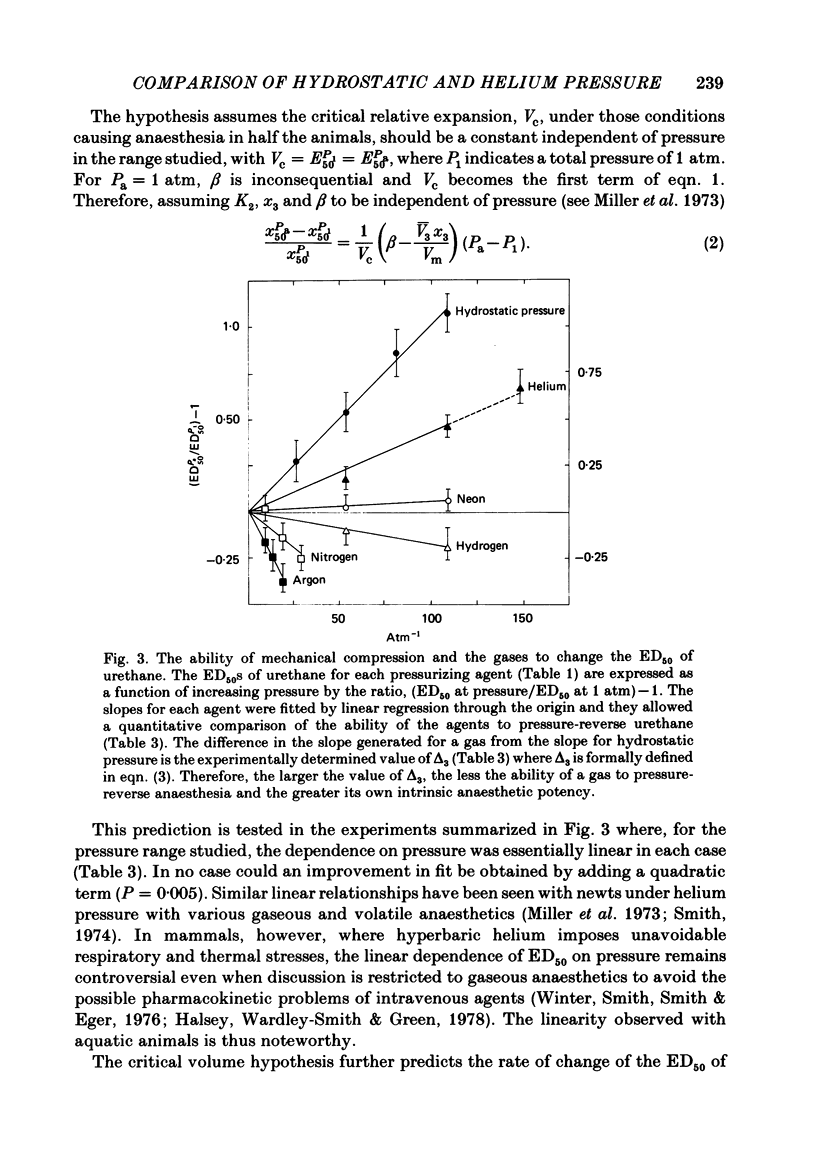
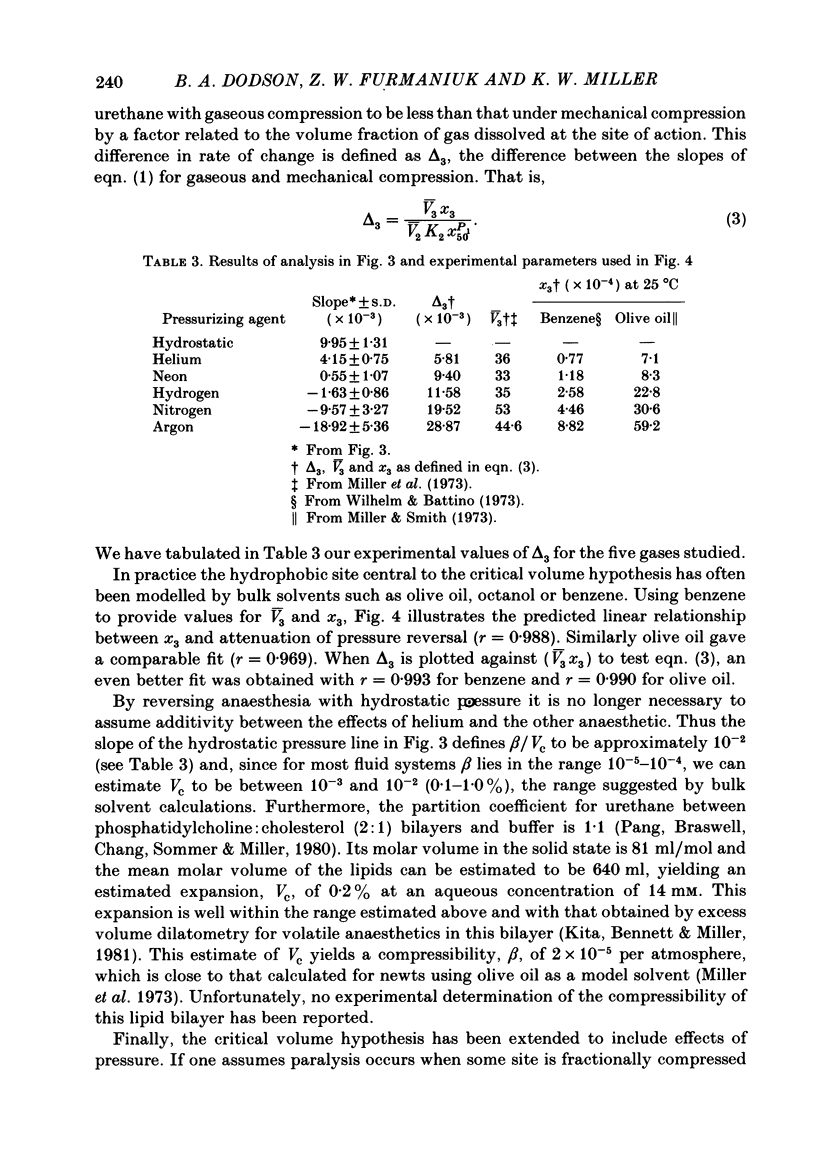
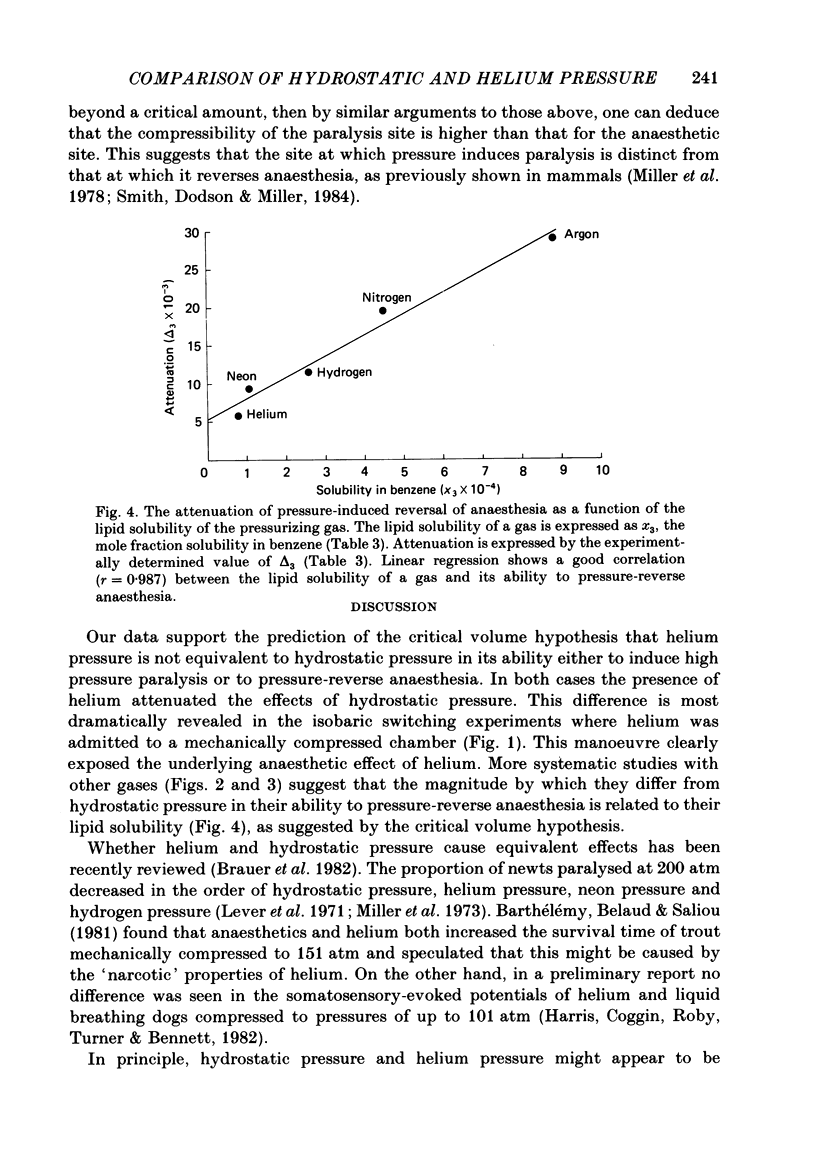

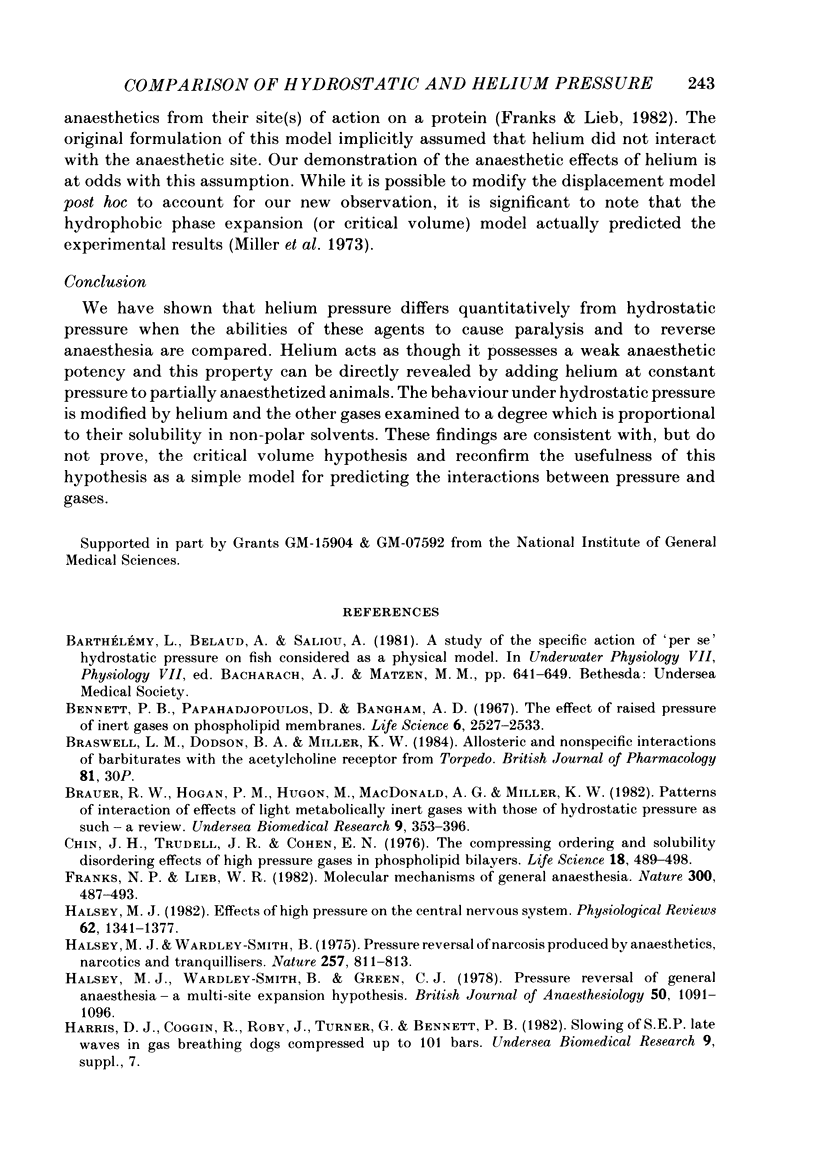
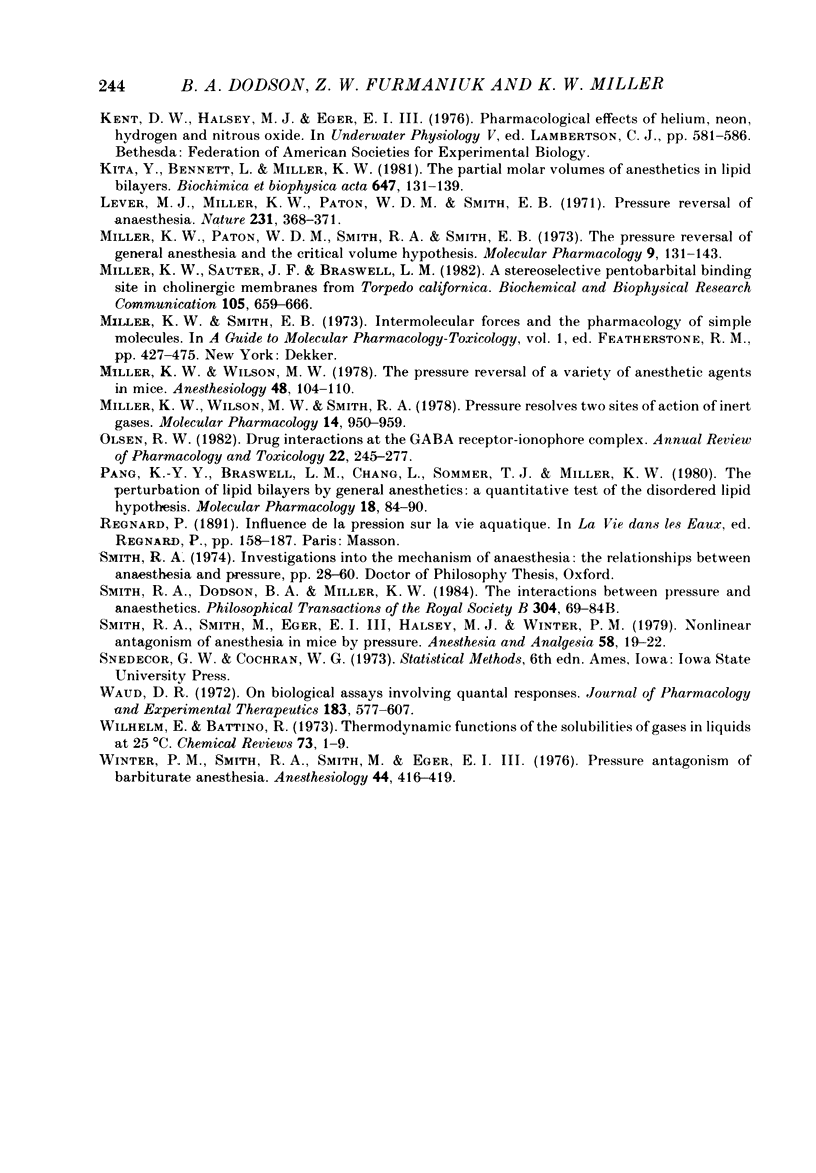
Selected References
These references are in PubMed. This may not be the complete list of references from this article.
- Bennett P. B., Papahadjopoulos D., Bangham A. D. The effect of raised pressure of inert gases on phospholipid membranes. Life Sci. 1967 Dec 1;6(23):2527–2533. doi: 10.1016/0024-3205(67)90317-7. [DOI] [PubMed] [Google Scholar]
- Brauer R. W., Hogan P. M., Hugon M., Macdonald A. G., Miller K. W. Patterns of interaction of effects of light metabolically inert gases with those of hydrostatic pressure as such--a review. Undersea Biomed Res. 1982 Dec;9(4):353–396. [PubMed] [Google Scholar]
- Chin J. H., Trudell J. R., Cohen E. N. The compression-ordering and solubility-disordering effects of high pressure gases on phospholipid bilayers. Life Sci. 1976 Mar 1;18(5):489–497. doi: 10.1016/0024-3205(76)90326-x. [DOI] [PubMed] [Google Scholar]
- Franks N. P., Lieb W. R. Molecular mechanisms of general anaesthesia. Nature. 1982 Dec 9;300(5892):487–493. doi: 10.1038/300487a0. [DOI] [PubMed] [Google Scholar]
- Halsey M. J. Effects of high pressure on the central nervous system. Physiol Rev. 1982 Oct;62(4 Pt 1):1341–1377. doi: 10.1152/physrev.1982.62.4.1341. [DOI] [PubMed] [Google Scholar]
- Halsey M. J., Wardley-Smith B., Green C. J. Pressure reversal of general anaesthesia--a multi-site expansion hypothesis. Br J Anaesth. 1978 Nov;50(11):1091–1097. doi: 10.1093/bja/50.11.1091. [DOI] [PubMed] [Google Scholar]
- Halsey M. J., Wardley-Smith B. Pressure reversal of narocsis produced by anaesthetics, narcotics and tranquillisers. Nature. 1975 Oct 30;257(5529):811–813. doi: 10.1038/257811a0. [DOI] [PubMed] [Google Scholar]
- Kita Y., Bennett L. J., Miller K. W. The partial molar volumes of anesthetics in lipid bilayers. Biochim Biophys Acta. 1981 Sep 21;647(1):130–139. doi: 10.1016/0005-2736(81)90301-1. [DOI] [PubMed] [Google Scholar]
- Lever M. J., Miller K. W., Paton W. D., Smith E. B. Pressure reversal of anaesthesia. Nature. 1971 Jun 11;231(5302):368–371. doi: 10.1038/231368a0. [DOI] [PubMed] [Google Scholar]
- Miller K. W., Paton W. D., Smith R. A., Smith E. B. The pressure reversal of general anesthesia and the critical volume hypothesis. Mol Pharmacol. 1973 Mar;9(2):131–143. [PubMed] [Google Scholar]
- Miller K. W., Sauter J. F., Braswell L. M. A stereoselective pentobarbital binding site in cholinergic membranes from Torpedo californica. Biochem Biophys Res Commun. 1982 Mar 30;105(2):659–666. doi: 10.1016/0006-291x(82)91485-1. [DOI] [PubMed] [Google Scholar]
- Miller K. W., Wilson M. W., Smith R. A. Pressure resolves two sites of action of inert gases. Mol Pharmacol. 1978 Sep;14(5):950–959. [PubMed] [Google Scholar]
- Miller K. W., Wilson M. W. The pressure reversal of a variety of anesthetic agents in mice. Anesthesiology. 1978 Feb;48(2):104–110. doi: 10.1097/00000542-197802000-00005. [DOI] [PubMed] [Google Scholar]
- Olsen R. W. Drug interactions at the GABA receptor-ionophore complex. Annu Rev Pharmacol Toxicol. 1982;22:245–277. doi: 10.1146/annurev.pa.22.040182.001333. [DOI] [PubMed] [Google Scholar]
- Pang K. Y., Braswell L. M., Chang L., Sommer T. J., Miller K. W. The perturbation of lipid bilayers by general anesthetics: a quantitative test of the disordered lipid hypothesis. Mol Pharmacol. 1980 Jul;18(1):84–90. [PubMed] [Google Scholar]
- Smith R. A., Smith M., Eger E. I., 2nd, Halsey M. J., Winter P. M. Nonlinear antagonism of anesthesia in mice by pressure. Anesth Analg. 1979 Jan-Feb;58(1):19–22. doi: 10.1213/00000539-197901000-00008. [DOI] [PubMed] [Google Scholar]
- Waud D. R. On biological assays involving quantal responses. J Pharmacol Exp Ther. 1972 Dec;183(3):577–607. [PubMed] [Google Scholar]
- Winter P. M., Smith R. A., Smith M., Eger E. I., 3rd Pressure antagonism of barbiturate anesthesia. Anesthesiology. 1976 May;44(5):416–419. doi: 10.1097/00000542-197605000-00010. [DOI] [PubMed] [Google Scholar]


